When we think of deserts around the world, we tend to imagine the seemingly never-ending sandy dunes and dying of thirst in the heat. However, a subtropical desert like the one we just described is merely one type of desert that exists. We are going to examine the 15 largest deserts in the world and show you how they differ in terms of temperature, location, and more.
Before we start looking at the largest deserts that exist today, we have to answer a very basic question: what is a desert?

What Is A Desert?
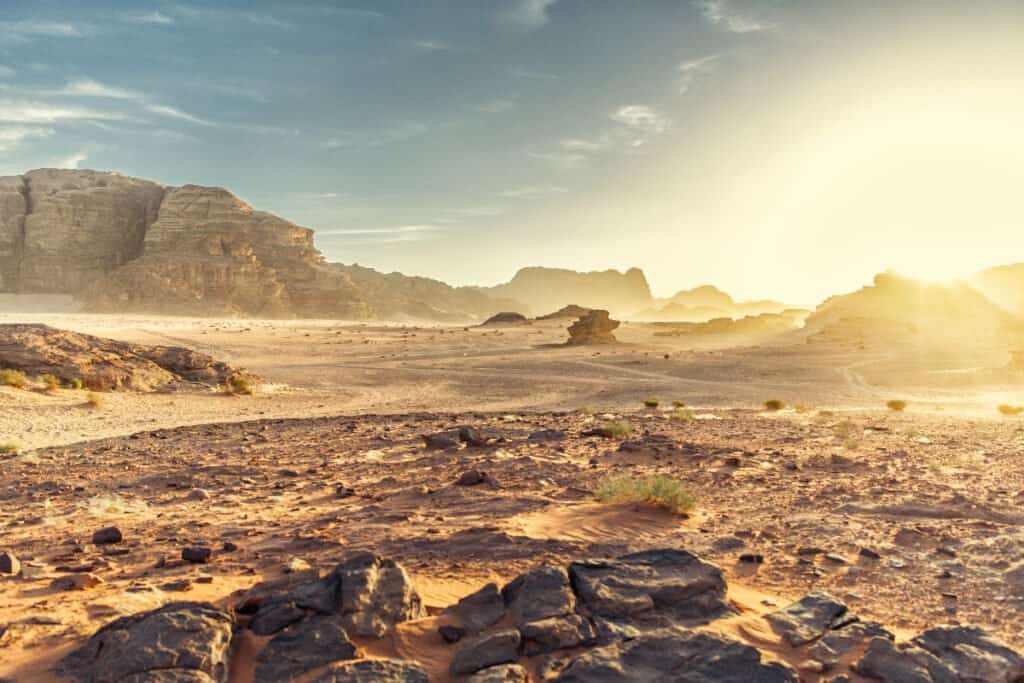
Deserts are landscapes that feature less than 10 inches of rain throughout the year.
©Alexxxey/Shutterstock.com
A desert is an arid, barren landscape that features little precipitation, with as little as 10 inches of rain or fewer occurring throughout the year. This is a major type of ecosystem on Earth, and it is also one of the most hostile ones in existence. Of course, humans have found a way to make them habitable.
Contrary to popular belief, not all deserts are hot and sandy. Some of them occur in the coldest, most remote areas on Earth, such as Antarctica.
We can now explore the types of deserts and use this knowledge to leave behind some preconceived notions about the nature of deserts.
What Types Of Deserts Exist?

Deserts can occur in both extreme heat and also the coldest locations on Earth.
©leolintang/Shutterstock.com
Five different kinds of deserts exist. They are subtropical deserts, coastal deserts, rain shadow deserts, interior deserts, and polar deserts.
They can also be organized into four other kinds of deserts called hot, cold, semiarid, or coastal deserts.
Knowing these different sorts of deserts will help conceptualize the vast differences that appear in these landscapes.
The 15 Largest Deserts In The World
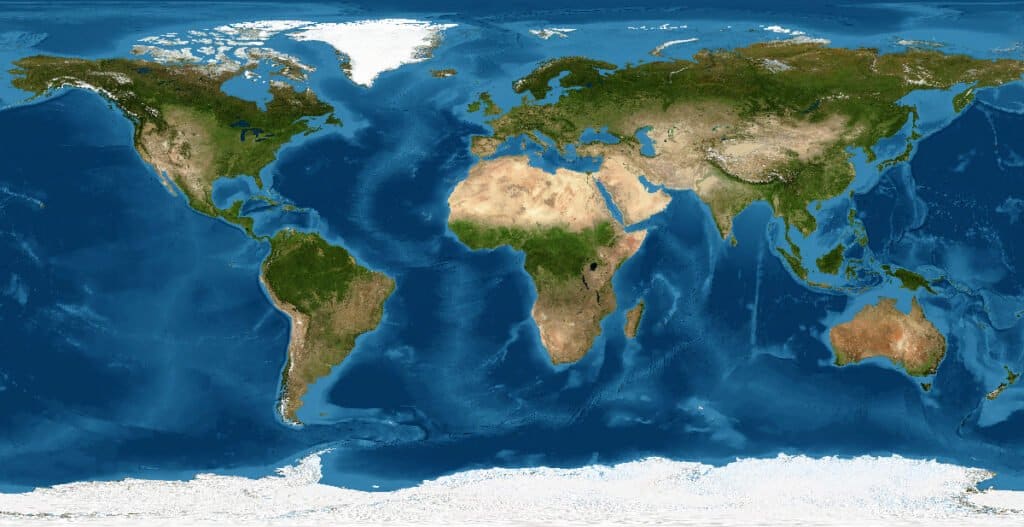
Deserts are clearly visible on maps of the world.
©Viacheslav Lopatin/Shutterstock.com
A significant portion of the world is covered by deserts. Although it might seem like Africa and the Middle East are the only places with deserts, that’s not true. The largest deserts in the world are located on several continents and tucked away in places most people would not suspect.
Without further ado, let’s take a look at the 15 biggest deserts in the world.
15. Kyzylkum Desert
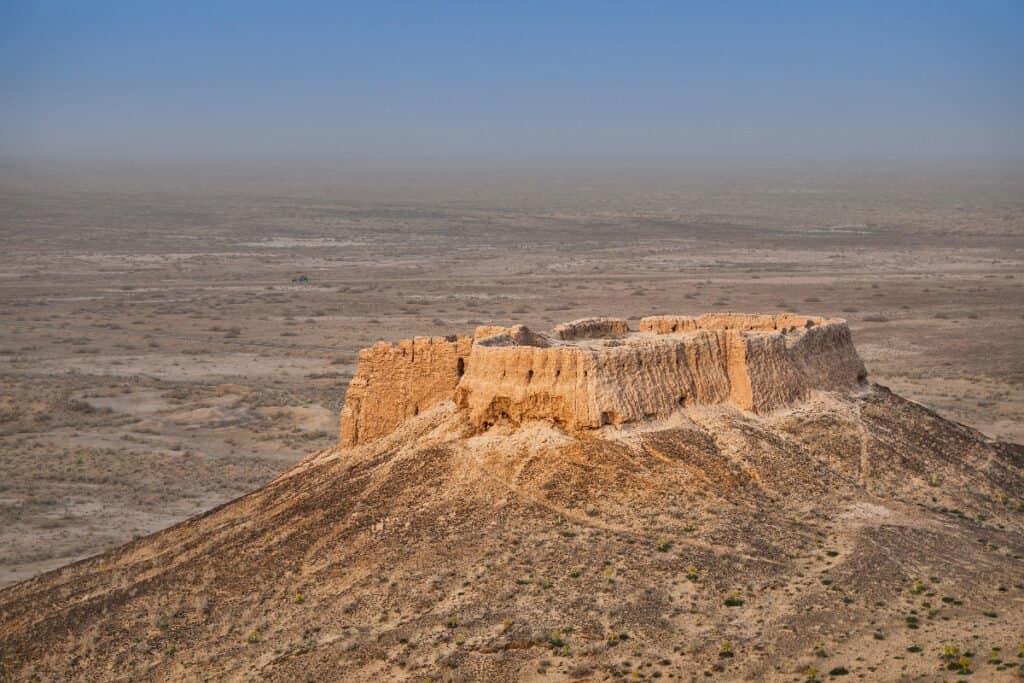
The Kyzylkum Desert is located in central Asia
©Sergey Dzyuba/Shutterstock.com
| Location | Desert Type | Area (square miles) |
| Turkmenistan, Uzbekistan, and Kazakhstan | Cold | 115,000 |
The Kyzylkum Desert is a massive desert that exists in central Asia. Its name means Red Sand, and that’s rather accurate for the color of the sand in the area. This desert has warm summer months, cold nights, and then very cold winters. It’s the site of a lot of mining operations for precious metals, and people also use the vast land here to graze their livestock, especially camels.
14. Sonoran Desert
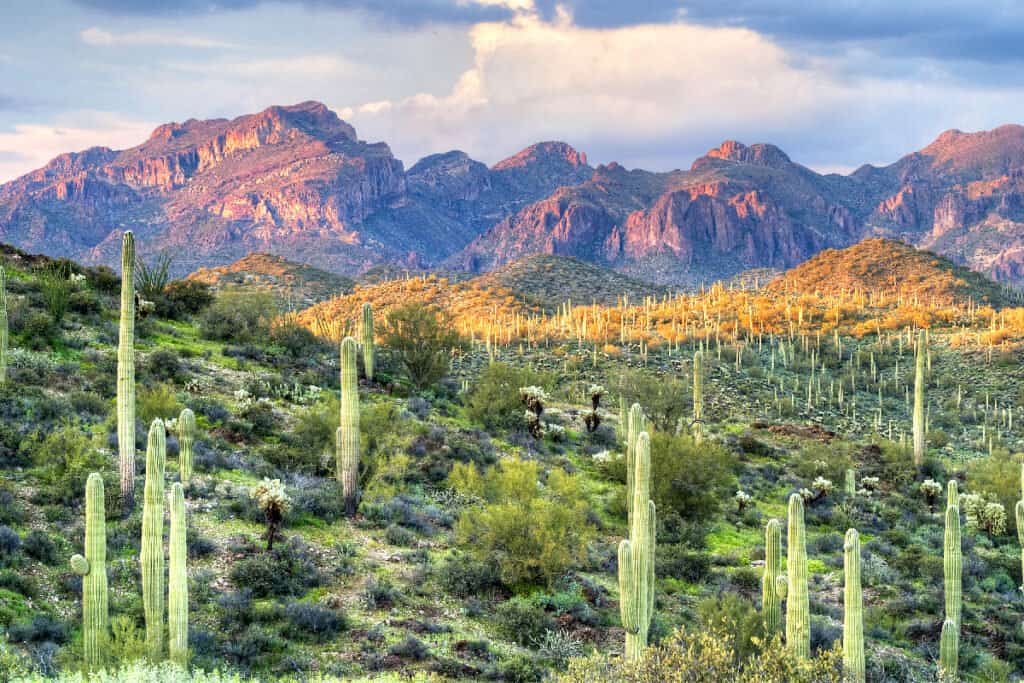
The Sonoran Desert is iconic for its cactuses and fauna
©LHBLLC/Shutterstock.com
| Location | Desert Type | Area (square miles) |
| United States and Mexico | Subtropical | 119,600 |
Although this may seem too close to the Great Basin and Mojave deserts to be its own, the Sonoran Desert of Sonora, California, and Arizona is distinct. This desert is a place where many Native Americans live and it’s home to many other legally protected areas. Also, this area has two seasons of rainfall, so it has more plant growth than any other desert out there!
13. Colorado Plateau

The Colorado Plateau Desert is rarely mentioned but significant nonetheless
©Nature’s Charm/Shutterstock.com
| Location | Desert Type | Area (square miles) |
| United States | Cold | 130,116 |
The Colorado Plateau is organized exclusively in the United States. It occurs in Utah, New Mexico, Colorado, and Arizona, almost overlapping with the Sonoran Desert. A lot of the area is mountainous and inhospitable. Also, much of the area is protected as national parks, including the Grand Canyon and Zion National Park.
12. Karakum Desert

The Karakum Desert is home to the Gates of Hell gas crater
©Matyas Rehak/Shutterstock.com
| Location | Desert Type | Area (square miles) |
| Turkmenistan | Hot | 135,136 |
The name Karakum Desert means “black sand desert”. Although the sand might look light in color, below the surface is much larger sand. The desert covers a lot of Turkmenistan, and it is home to a lot of natural resources like oil and natural gas. The desert also has the Darvaza gas crater, a tourist attraction consisting of a natural gas crater that has been burning since the 1970s.
11. Great Basin Desert
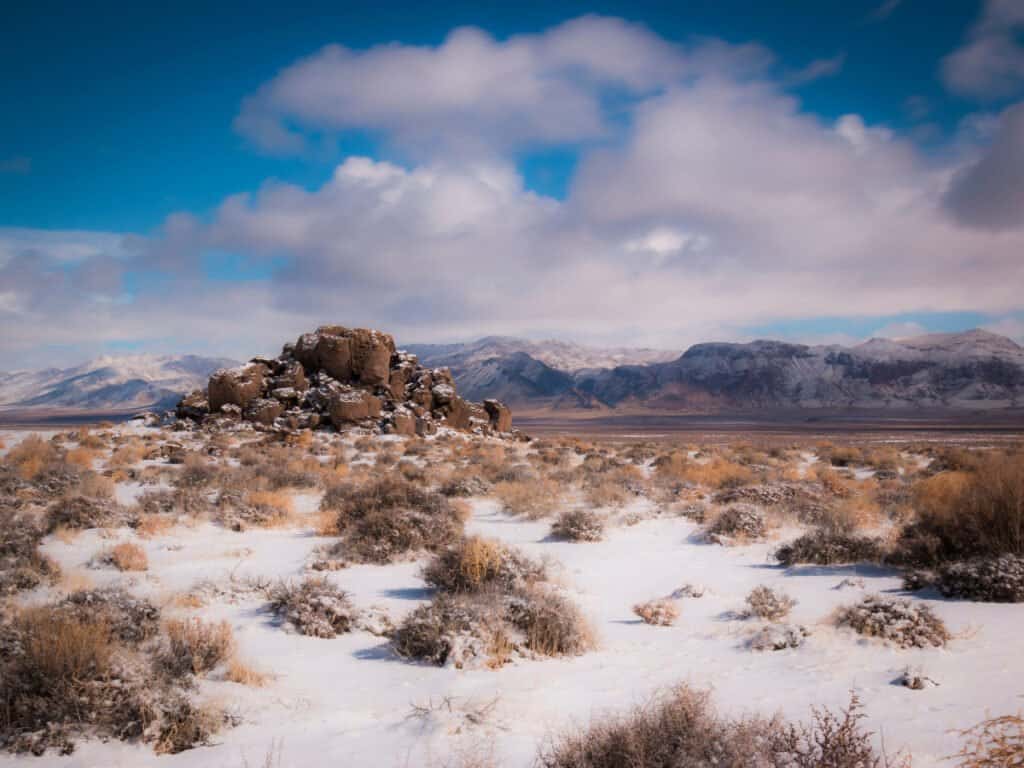
The Great Basin Desert houses the famous Bonneville Salt Flats where movies are filmed and cars tested
©Robert Stolting/Shutterstock.com
| Location | Desert Type | Area (square miles) |
| United States | Cold | 190,000 |
The Great Basin Desert is the largest desert in the United States. This desert is the one that permeates Nevada and extends into Idaho, Utah, and parts of California. The desert is known for its incredible biological diversity and unique areas. For example, this desert includes Utah’s Bonneville Salt Flats as well as plains that have unique plant life.
10. Chihuahuan Desert

This desert is the largest one located entirely in North America
©John A Davis/Shutterstock.com
| Location | Desert Type | Area (square miles) |
| Mexico and the United States | Subtropical | 193,000 |
The Chihuahuan Desert is the largest desert in North America by area. This desert spreads across the western portion of Texas along with some of Arizona and New Mexico in the United States. The desert stretches into Mexico, too. The desert exists as a rain shadow desert; the mountainous area prevents moisture from coming into this area.
9. Syrian Desert

The Syrian Desert is very important to human history
©Anton_Ivanov/Shutterstock.com
| Location | Desert Type | Area (square miles) |
| Iraq, Syria, Jordan, and Saudi Arabia | Subtropical | 193,000 |
The Syrian Desert is almost interchangeable with the Chihuahuan Desert by size alone. However, this desert is located halfway around the world in several countries in the Middle East. This area has been home to historic settlements along the Euphrates River and the site of modern-day atrocities alike. The land tends to be open and flat, hot during the day and cool at night.
8. Patagonian Desert
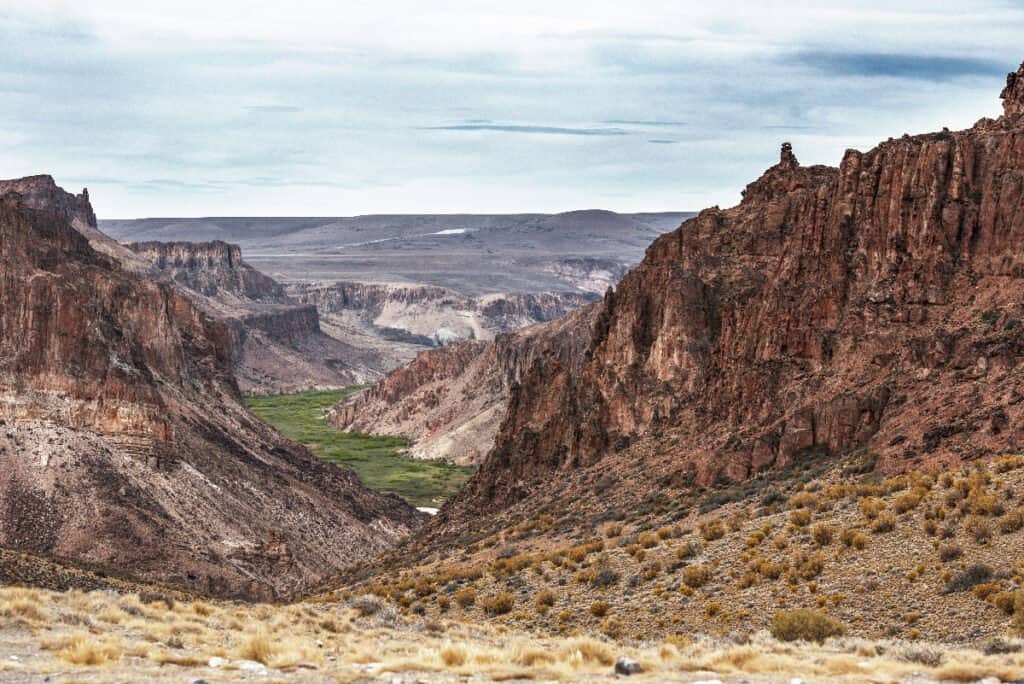
The Patagonian Desert is located in Argentina, and it’s weather comes from the mountains near it
©Manu Iglesias/Shutterstock.com
| Location | Desert Type | Area (square miles) |
| Argentina | Cold | 259,800 |
Although it is one of the largest deserts in the world, it’s not one of the most popular. The desert is located entirely within Argentina, and it is believed to have been around for about 14 million years. Much of this desert is a result of the rain shadow effect due to the Andes Mountains to the west of the area.
7. Kalahari Desert
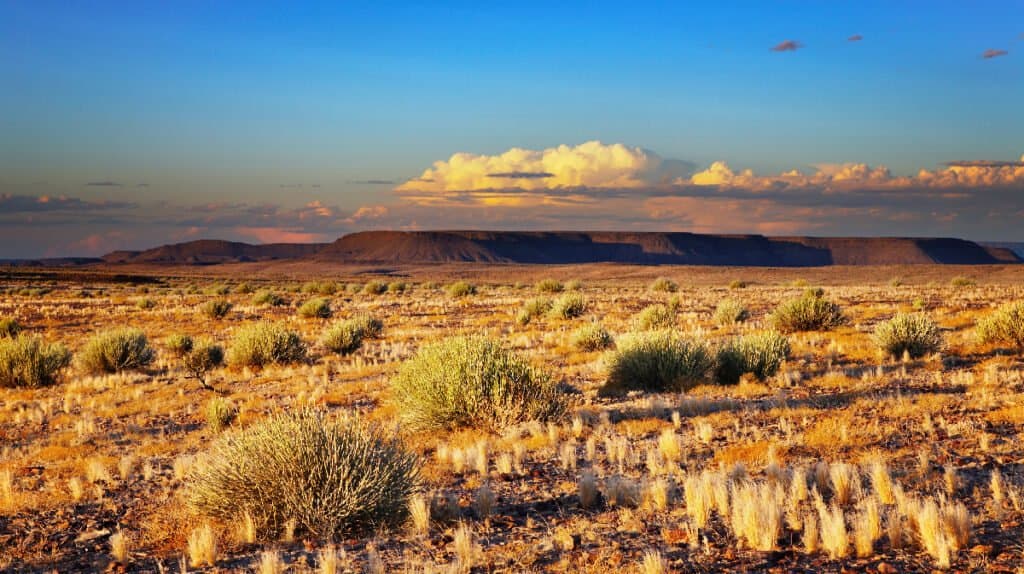
The Kalahari Desert derives its name from a term meaning “great thirst.”
©Dmitry Pichugin/Shutterstock.com
| Location | Desert Type | Area (square miles) |
| South Africa, Namibia, and Botswana | Subtropical | 347,492 |
Although the Sahara gets the most attention for deserts in Africa, the Kalahari Desert is a sizable desert in the southern portion of the continent. The name comes from a term meaning “great thirst” and that is very apt for the type of climate that exists in this area. The Kalahari Desert is a very hot subtropical desert, but it’s still home to flora and fauna.
6. Gobi Desert
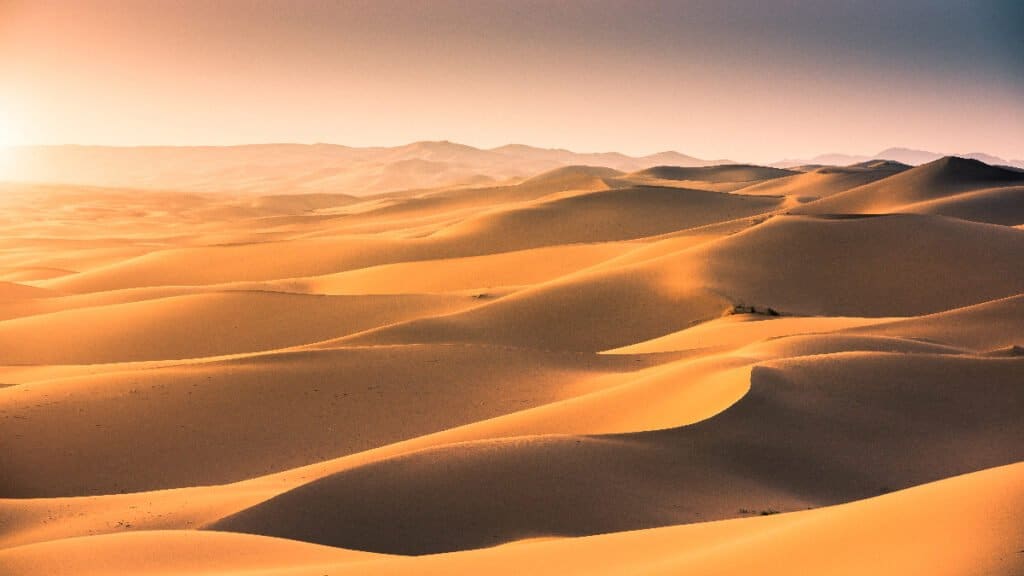
The Gobi Desert was once part of the famous Silk Road
©mr.wijannarongk kunchit/Shutterstock.com
| Location | Desert Type | Area (square miles) |
| China and Mongolia | Cold | 500,000 |
The Gobi Desert has significance as a large desert but also as a trade route stretching back over a thousand years as part of the Silk Road. The temperatures range from mild in the summer months to freezing cold in the winter with mean temperatures below freezing or far below freezing. Although this area is harsh and hard to survive in, it’s home to animals and was home to nomadic people throughout history.
5. Arabian Desert
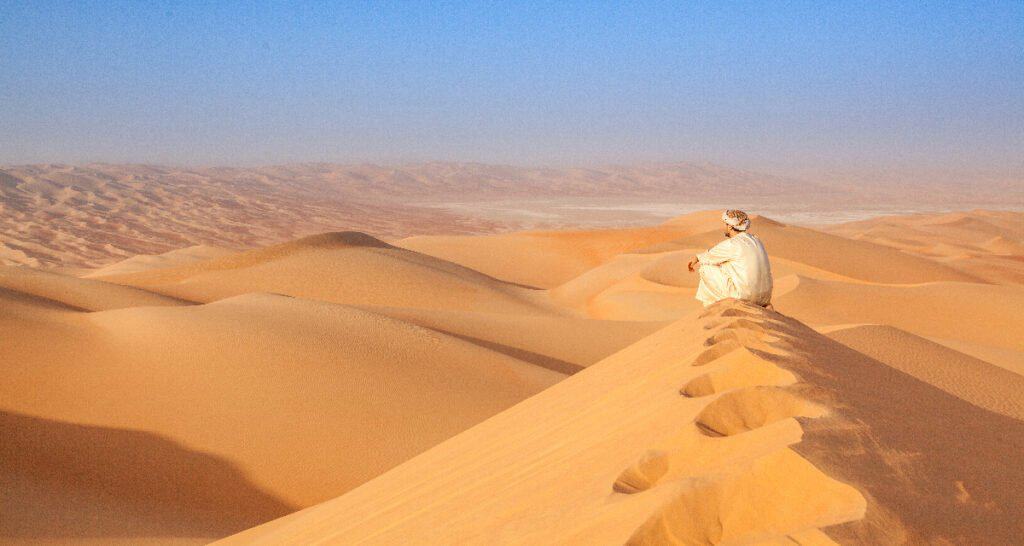
The Arabian Desert is home to barren sands and amazing cities
©SelimBT/Shutterstock.com
| Location | Desert Type | Area (square miles) |
| Western Asia/ Middle East | Subtropical/hot | 899,000 |
The dunes of the Arabian Desert are the stuff of legends, with some of these sandy drifts reaching several hundred feet in height. Despite the difficulty of surviving in these areas, humans and animals alike live in this desert. Many cities like Dubai, Riyadh, and others are in this desert, showing that humans can find habitable places anywhere.
4. Great Australian Desert
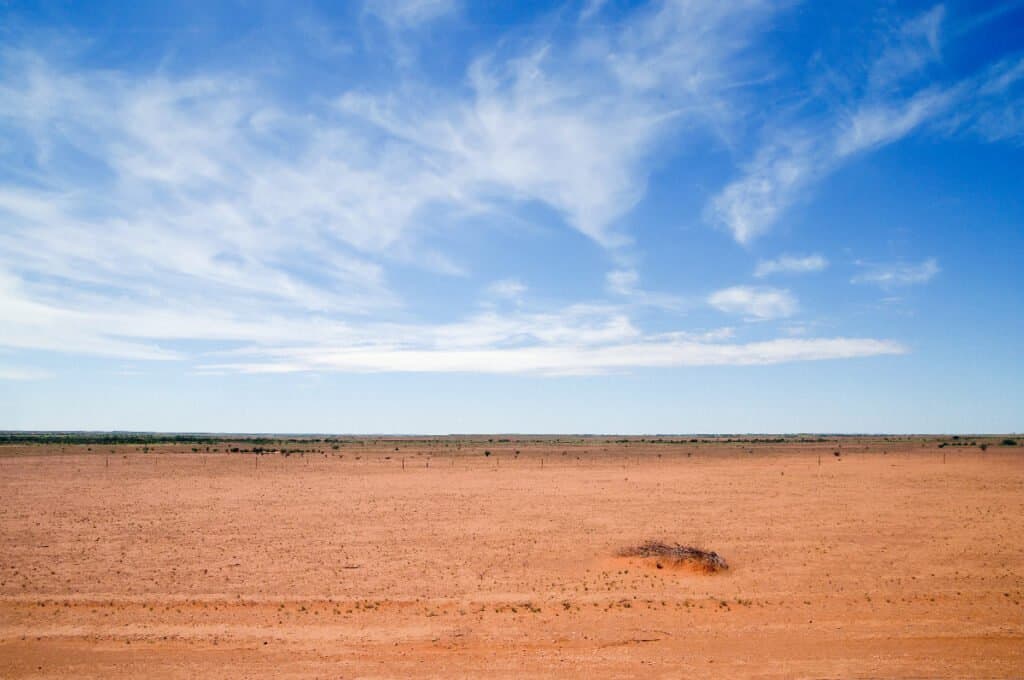
Much of Australia’s interior is covered by desert
©clearviewstock/Shutterstock.com
| Location | Desert Type | Area (square miles) |
| Australia and technically New Zealand | Subtropical/hot | 1,042,000 |
Although some people split the Great Australian Desert into different sections, it’s often amalgamated into one. This is the fourth-largest desert, and it stretches over a million square miles. This desert is unusual in that it receives an above-average amount of rain along the perimeter but less so toward the interior. The desert has rocky, hilly areas, dunes, and flatter areas. The desert is very hot in the summer.
3. Sahara Desert

In Arabic, Sahara means desert. This is the Desert Desert
©Anton Petrus/Shutterstock.com
| Location | Desert Type | Area (square miles) |
| Africa, spanning several nations | Subtropical/hot | 3,552,100 |
The Sahara Desert is the largest subtropical and hot desert that exists today. It stretches across vast portions of northern Africa, and it’s three times larger than the desert in Australia. Interestingly, that makes this desert the largest inhabited desert. Plans to stop the desertification of lands south of the Sahara are underway. However, only about 4% of the supposed “Great Green Wall” has been completed so far.
2. Arctic Desert
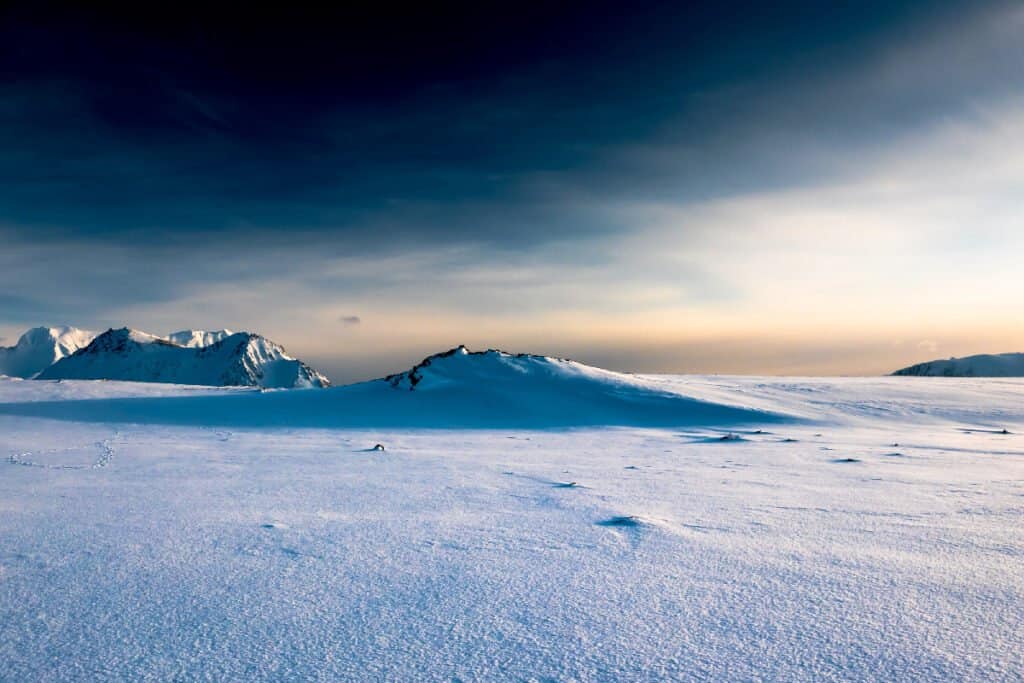
The Arctic Desert is incredibly cold and the farthest area north in the world
©Rob Pogorzelski/Shutterstock.com
| Location | Desert Type | Area (square miles) |
| North America, North Asia, North Europe | Polar | 5,366,820 |
The Arctic Desert is at the most northern parts of Earth, comprising land from many nations. This area is simply vast, dwarfing even the Sahara Desert. Unlike that hot desert, the Sahara Desert is polar, very cold. This area has been explored and mapped throughout history. The arctic continues to be a site of concern in the battle against global warming and climate change as a whole.
1. Antarctic Desert
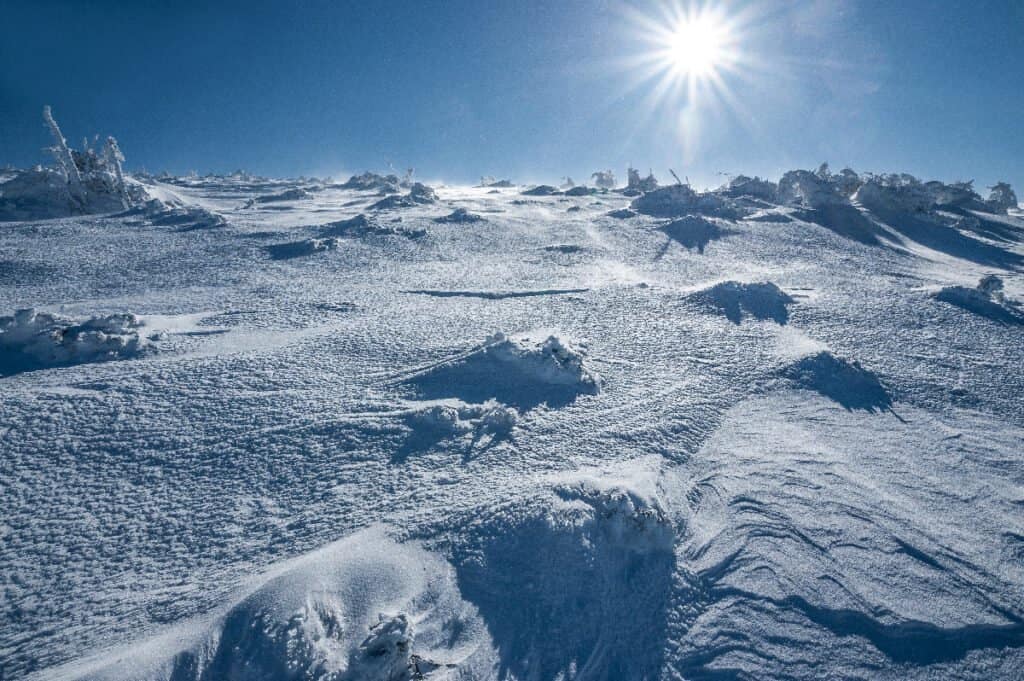
The Antarctic Desert is the biggest desert and also one of the most remote
©Wojciech Dziadosz/Shutterstock.com
| Location | Desert Type | Area (square miles) |
| Antarctica | Polar | 5,482,650 |
The largest desert is the Antarctic Desert. This area of the world is nearly 5.5 million square miles of desert land. It’s located in the southernmost reaches of the world and is not owned by any nation. However, it is governed by roughly 30 countries. This area of the world is incredibly cold and makes habitation nearly impossible when considering the lack of transportation and other features.
What Is The Driest Desert?
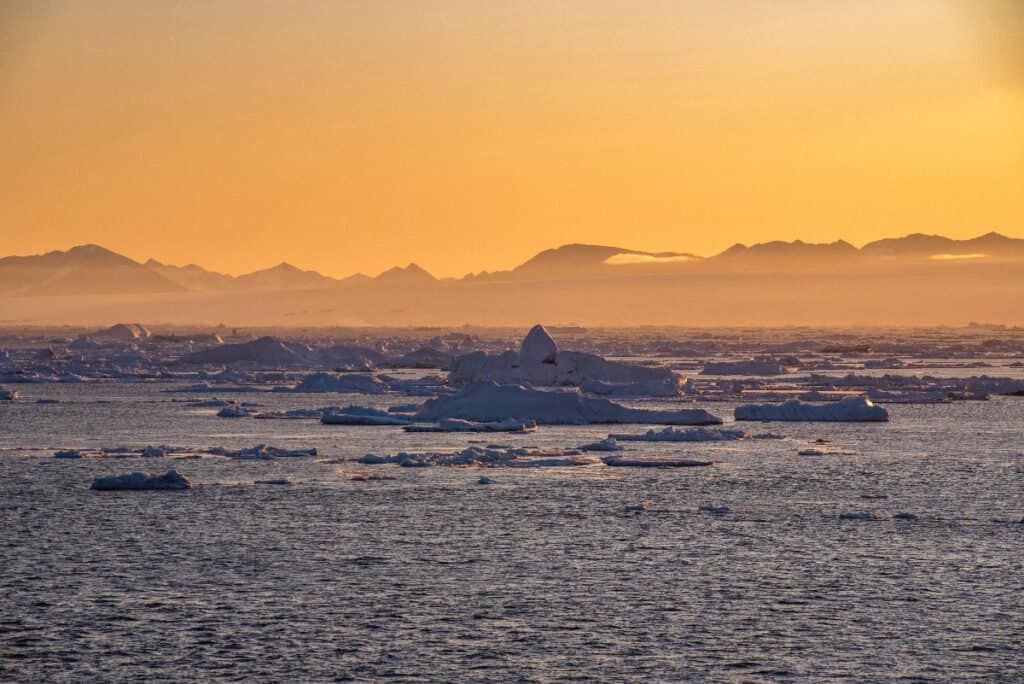
The Antarctic Desert has portions that are the driest overall
©Olga Kysliuk/Shutterstock.com
The driest desert is the Antarctic Desert. This desert receives a measly 1.9 inches of snow in the center of the desert throughout the year, but some parts of the desert receive no precipitation at all. By definition, the driest desert would be the one that receives the least amount of precipitation in the year.
The Atacama Desert is a close runner-up as a true desert that receives 0.04 inches of precipitation. The Atacama Desert is also known to have gone up to 500 years without a single raindrop. Of course, the Sahara Desert is also very dry and only gets about 4 inches of rain every year in some places.
These are the driest deserts that exist around the world today.
What Is The Largest Hot Desert
The largest hot desert in the world is the Sahara Desert. While both the Arctic and Antarctic deserts are larger in size, they are cold deserts near the poles of the Earth. The Sahara Desert is more than 3X the size of the next closest hot desert, which is the Great Australian Desert.
Final Thoughts About the Largest Deserts In The World
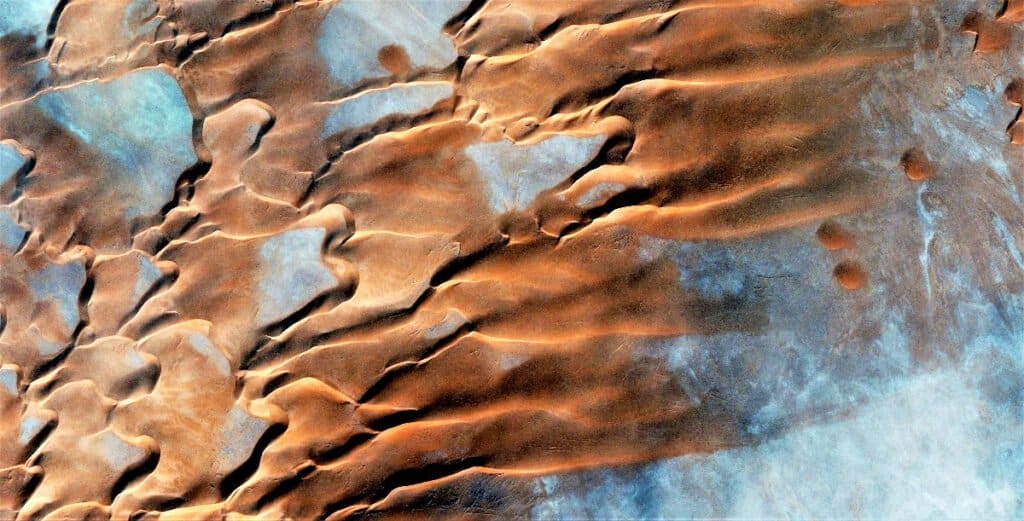
About one-third of the world is covered in deserts
©Munimara/Shutterstock.com
The Antarctic Desert is the largest desert going only to the strict definition of the term. It’s just a bit larger than the second-largest desert, but much larger than the Sahara Desert. The vastness of these areas around the world shows just how much of the planet is downright inhospitable.
Perhaps it should create a sense of urgency for people to take a look at the lush, habitable parts of the planet and work harder to protect them for the sake of all living things.
| Rank | Desert | Location | Size in Square Miles | Desert Type |
|---|---|---|---|---|
| 15 | Kyzylkum Desert | Turkmenistan, Uzbekistan, and Kazakhstan | 115,000 | Cold |
| 14 | Sonoran Desert | United States and Mexico | 119,600 | Subtropical |
| 13 | Colorado Plateau | United States | 130,116 | Cold |
| 12 | Karakum Desert | Turkmenistan | 135,136 | Hot |
| 11 | Great Basin Desert | United States | 190,000 | Cold |
| 10 | Chihuahuan Desert | Mexico and the United States | 193,000 | Subtropical |
| 9 | Syrian Desert | Iraq, Syria, Jordan, and Saudi Arabia | 193,000 | Subtropical |
| 8 | Patagonia Desert | Argentina | 259,800 | Cold |
| 7 | Kalahari Desert | South Africa, Namibia, and Botswana | 347,492 | Subtropical |
| 6 | Gobi Desert | China and Mongolia | 500,000 | Cold |
| 5 | Arabian Desert | Western Asia/ Middle East | 899,000 | Subtropical/Hot |
| 4 | Great Australian Desert | Australia and technically New Zealand | 1,042,000 | Subtropical/Hot |
| 3 | Sahara Desert | Africa, spanning several nations | 3,552,100 | Subtropical/Hot |
| 2 | Arctic Desert | North America, North Asia, North Europe | 5,366,820 | Polar |
| 1 | Antarctic Desert | Antarctica | 5,482,650 | Polar |
The photo featured at the top of this post is © Mikadun/Shutterstock.com
Thank you for reading! Have some feedback for us? Contact the AZ Animals editorial team.






